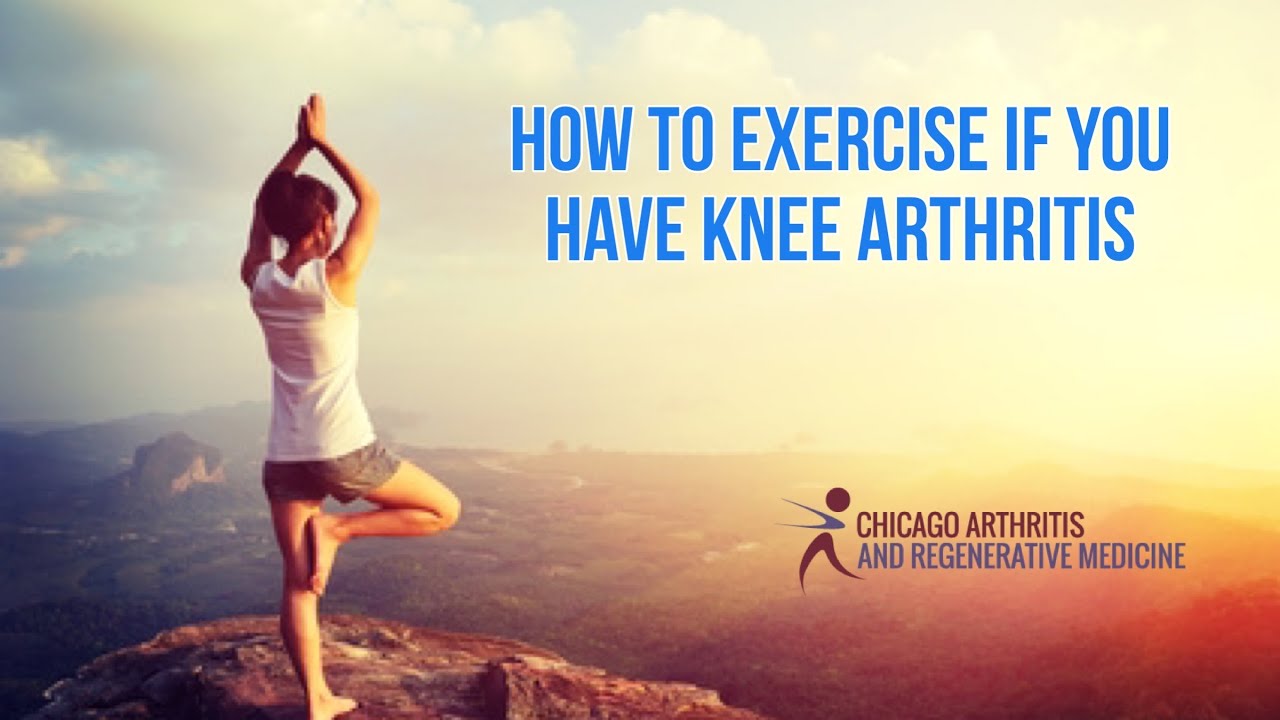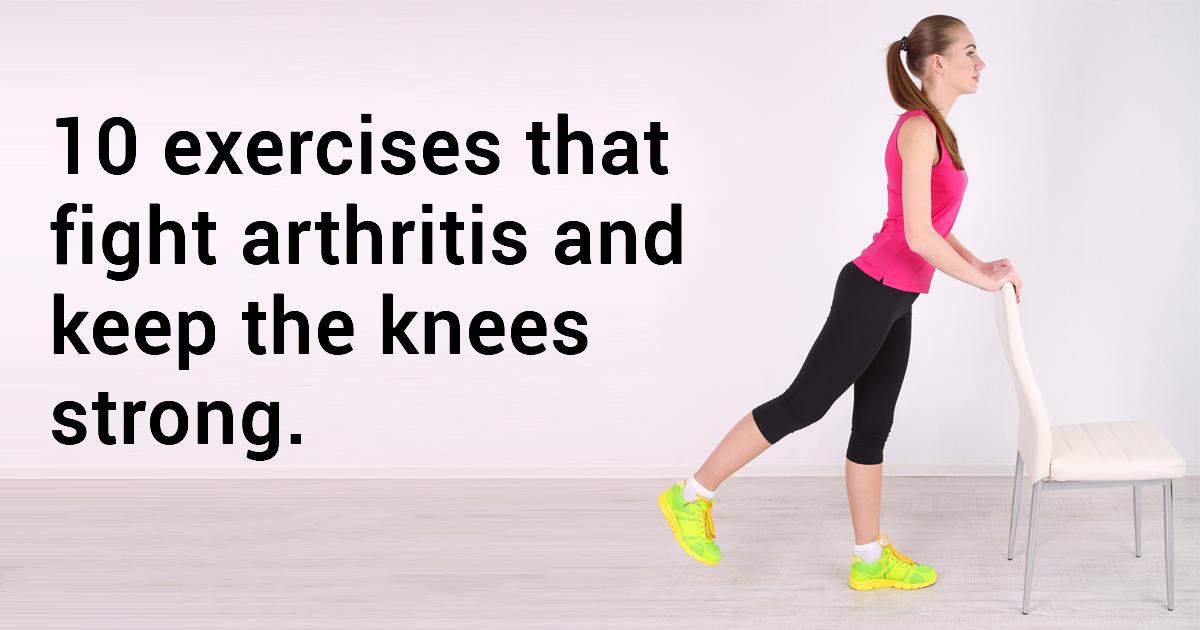Exercise Tips For Rheumatoid Arthritis
Managing RA with Exercise
Exercise works to get your heart pumping, but did you know that it can also help keep your rheumatoid arthritis symptoms under control? According to the American College of Rheumatology, people with RA are twice as likely to develop heart disease and other vascular complications, including heart attacks, angina, and strokes, than the average person. Therefore, regular exercise is not only considered a safe treatment option for people with RA, it can be essential to maintaing heart and joint health.
A consistent exercise routine works to get you through RA flare-ups and helps you thrive with your chronic pain condition.
How To Get Started Exercising With Osteoarthritis
First, talk to your doctor about the best types of exercise for you. Then, start slowly. Start with supervision from a physical therapist or qualified athletic trainer.
It’s always smart to start your workout with a warm-up. But people with OA may want to go one step further to warm their muscles. Taking a warm bath or applying heat packs to joints may be helpful before you work out.
Movement itself can warm up muscles. If you’re getting ready to swim or walk, your warm-up can be a gentle swim or walk.
How Does Exercise Help Ra
RA causes several clinical manifestations which result in decreased or poor mobility, chronic pain, depression and overall lack of energy. Physical exercise is strongly recommended for RA patients to reduce joint pain and prevent these symptoms from impacting their quality of life.
Moderate and regular physical activity helps to keep joints and muscles in motion and build muscle strength. This is important for RA patients who may begin to notice severe decreases in mobility and increases in painful joint stiffness. Physical activity and controlled stretching can also help to increase flexibility which is necessary for those who suffer from RA to be able to continue to perform day-to-day activities.
Additionally, by performing consistent physical activity, cardiovascular strength improves which helps prevent heart disease and other medical complications that relate to RA.
RA patients also tend to suffer from chronic fatigue, depression, and immune system complications that make them more susceptible to infections and illness. Exercise can counter these negative outcomes by improving emotional well-being, increasing energy levels, and boosting immune system function.
Recommended Reading: What Is The Rheumatoid Arthritis Blood Test
Before And After Exercise
If you can, put a moist-heat pack on your arthritic knee for 20 minutes before you start exercising. Heat is soothing and it also brings the blood to the surface, decreases stiffness, and sometime relieves pain.
If you take pain medications, try taking them about 45 minutes before you exercise for increased pain control during your workout.
After exercising, put an ice pack on the sore knee for 10 to 15 minutes. This will help to bring down any swelling caused by exercise. It will also help to soothe and relieve pain.
Gets Your Joints Moving

The reason your body hurts from the arthritis is that your bones are locking up from not being used. The synovial fluid that lubricates your joints goes still, whereas regular motion encourages the development of fresh joint fluid. It also gets that fluid moving around your joints so they actually work as intended.
Although you may not feel like moving and working your joints, sitting still is perhaps the worst thing you can do when you have arthritis, so get to exercising.
Also Check: What Over The Counter Medication Is Good For Arthritis
Role Of Exercise In Arthritis Management
by Susan Bartlett, Ph.D.
The physiological benefits of exercise are well documented and include reduced risks of:
- coronary artery disease
- obesity
- colon cancer
Physical activity is essential to optimizing both physical and mental health and can play a vital role in the management of arthritis. Regular physical activity can keep the muscles around affected joints strong, decrease bone loss and may help control joint swelling and pain. Regular activity replenishes lubrication to the cartilage of the joint and reduces stiffness and pain. Exercise also helps to enhance energy and stamina by decreasing fatigue and improving sleep. Exercise can enhance weight loss and promote long-term weight management in those with arthritis who are overweight.
Exercise may offer additional benefits to improving or modifying arthritis. As Dr. Steven Blair, Exercise Epidemiologist and Director of Epidemiology at the Cooper Institute for Aerobics Research in Dallas TX notes Skeletal muscle is the largest organ in the body and is intricately tied with protein turnover and synthesis and many other metabolic and biochemical functions. Activating skeletal muscle has many important health benefits we are only beginning to understand.
Is There A Wellness Tool Or App That Can Help Me
If youre living with arthritis and using doctor-recommended exercises to manage pain, you can track your activity by downloading a mobile fitness app. The Arthritis Foundation developed the TRACK+REACT app to help you track your day-to-day activities and improve your overall health. Download the app to start tracking your exercises and reduce the pain caused by your arthritis. Always follow the instructions for exercise machines carefully.
Recommended Reading: What Can I Take Over The Counter For Arthritis Pain
Think You Shouldnt Exercise Because It Could Make Your Arthritis Symptoms Worse Most Of The Time Thats Just Not The Case
Exercise is a mainstay part of managing arthritis. This is true whether you have osteoarthritis, a kind of wear-and-tear on your joints, or inflammatory arthritis such as rheumatoid or psoriatic, which occurs because your immune system is attacking your joints and causing systemic inflammation.
But a majority of arthritis patients said they have not increased the amount they exercise since being diagnosed, according to the results of our latest ArthritisPower Community Poll. We asked people if theyve started exercising more after being diagnosed with arthritis out of 640 respondents, 59 percent said no. Only 41 percent said yes.
Now, there are many reasons people with different kinds of arthritis may avoid exercising or increasing their physical activity levels, but its important to debunk and clarify a myth behind one of the big ones: the belief that exercise can exacerbate or worsen your disease.
One of the biggest misconceptions about arthritis and exercise is people think, Well, its not good for me, says exercise physiologist Lynn Millar, PT, PhD, FACSM, department chair of physical therapy at Winston-Salem State University. I like to harp on the fact that exercise is one of the key treatments for arthritis. It will not make it worse. It will make it better.
But the most important thing is understanding that exercise, even if its very gentle and low-key, should be part of your arthritis treatment along with the medications you take to manage your disease.
Range Of Motion Exercises
Range of motion refers to how fully a joint can move within its parameters. For example, your knee is designed to flex up to 135 degrees at its healthiest range of motion once you fall below about 105 degrees, your ability to perform basic tasks will suffer. “Most arthritic knee patients can’t get past 90 degrees range of motion,” says Dr. Gallucci, “which inhibits their daily life, like their ability to sit comfortably on the couch or even use the toilet without pain.”
Consistently using arthritis-affected joints for range of motion exercises will, over time, increase your joints’ range of motion. Unlike some other exercises that should be done in moderation, these movements can usually be done every day.
Also Check: What Doctor To See For Psoriatic Arthritis
Time Your Exercise Around When You Feel Your Best
If you have a lot of stiffness in the morning, for example, you might not be able to go to the gym or do an exercise video, but you could do low-impact range-of-motion stretches, even while youre seated on your bed. If youre prone to fatigue, doing a few short bursts of activity could help break up the day and provide a much-needed energy boost. If you have difficulty sleeping at night, avoid exercising too close to bedtime.
How To Manage Arthritis Pain
Arthritis is one of the most debilitating conditions that affects billions of individuals worldwide. As of 2015, 54.4 million adults across the United States alone have been professionally diagnosed with arthritis. Of these individuals, 49.6% were 65 and older, a percentage that is expected to continue growing in the next 25 years. What many do not know, however, is that arthritis pain is 100% manageable if approached with the right knowledge and state of mind. If you have recently been diagnosed with arthritis, the following dos and donts of arthritis pain should serve as a good starting point for living a stress-free life.
Also Check: How To Keep Arthritis From Spreading
How Can Exercise Improve My Health Without Hurting My Joints
Whichever type of exercise youre performing, you may feel some discomfort at first, but you should start to feel better within a few minutes. If your discomfort doesnt quickly subside, it may be a warning sign to take it easy. Start with simple, gentle stretches and gradually progress to low-impact activities.
Know The Difference Between Discomfort And Pain

Its normal to be uncomfortable after exercising, especially if your body isnt used to it, but you shouldnt feel like youre in pain. If pain is greater two hours after exercise than it was before, reduce the length and intensity of your next session, advises the American College of Sports Medicine.
Millar had to stop jogging for more than a month when arthritis flared up in her knee. That first week, she could walk only every other day. Im never going to be down to a zero pain with my knees when I go out to exercise, she says. But I dont want it to start feeling worse. I have to be listening to my body and paying attention. Part of it is knowing and telling yourself, You cant just sit still. Back off a little, but dont stop completely.
Sydnor-Campbell has found a mantra thats helped her cope with her new normal: Be gentle with yourself. Dont get frustrated. You know what this is. You know what you have. It might not always be like this, and there is hope, she says. I keep telling myself this over and over.
Also Check: How To Relieve Arthritis Pain In Your Hands
What Medical Treatments Are Available For Arthritis
Comprehensive treatment is best for arthritis. At Orthopedic Associates of Southwest Florida, Dr. Dupay first determines the type of arthritis you have. Then he evaluates the condition of your joints and overall physical health to determine the best course of treatment.
There are several ways to treat arthritis, from lifestyle changes such as the activities described above to medications, such as anti-inflammatories, to surgical intervention.
Dont let arthritis pain keep you on the sidelines this year. To learn more, book an appointment online or over the phone with Orthopedic Associates of Southwest Florida today.
You Might Also Enjoy…
Types Of Exercise For Ra
Those with RA can still perform regular physical activities and even play certain sports. Depending on the disease stage, many RA patients continue to stick to their regular exercise routines or modify them to protect joints from stress and further damage.
Some common and recommended exercises for RA include :
You May Like: What Helps Lower Back Arthritis
How Do I Begin Exercising
Regardless of your condition, discuss exercise options with a doctor before beginning any new exercise program.
People with arthritis who are beginning a new exercise program should spend some time conditioning with a program that consists of only range-of-motion and strengthening exercises, depending on their physical condition and level of fitness. Endurance exercises should be added gradually, and only after you feel comfortable with your current fitness level.
As with any change in lifestyle, your body will need time to adapt to your new program. During the first few weeks, you may notice changes in the way your muscles feel, your sleep patterns, or energy levels. These changes are to be expected with increased activity. However, improper exercise levels or programs may be harmful, making symptoms of arthritis worse. Check with your doctor and adjust your program if you experience any of the following:
- Unusual or persistent fatigue
Can Exercise Help My Arthritis Pain
Living with arthritis can be very painful. Not only is it the most common chronic condition among Americans over 40 years old, but there are over 100 different variants of the disease and none of them have a cure. Thus, doctors and medical professionals strive to alleviate the symptoms and effects of arthritis pain in their bones and joints, and one of the primary ways they do this is by getting people to exercise.
In this article, we will talk to you about the following topics:
- The benefits of exercise for people who suffer from arthritis
- The best forms of exercise to relieve arthritis pain
- How arthritis sufferers can engage in responsible exercises
Our goal is to give you the tools you need to reduce your arthritis pain through exercise.
You May Like: What Are The Markers For Rheumatoid Arthritis
Ra And Exercise: Does Exercise Help With Pain And Inflammation
As part of a well-rounded treatment strategy, it is important to include exercise for rheumatoid arthritis . Though it may seem difficult or challenging to exercise, especially when dealing with chronic pain, physical activity is necessary to increase joint function, strengthen muscles, and improve overall health and energy levels.
While exercise is very important in RA treatment regimens, there are a few risks. Be sure to practice safe exercises and combine them with stretching and strength building activities for better physical health.
Ways Exercise Helps Arthritis
Even the healthiest people can find it hard to stick with an exercise regimen and if you suffer from the joint pain of arthritis, moving your body may be the last thing you want to think about. But regular exercise not only helps maintain joint function, it also relieves stiffness and reduces pain and fatigue.
If you have arthritis, you want to be sure your exercise routine has these goals in mind:
You May Like: Is Broccoli Good For Arthritis
Best Exercises For Rheumatoid Arthritis Pain
For people with rheumatoid arthritis , exercise can be hugely beneficial for relieving pain and joint stiffness.
People with RA who exercise may find that they have less pain than those who do not. Exercise can reduce painful symptoms, improve joint function and flexibility, increase range of motion, and boost mood.
It is best to seek medical advice before starting any exercise program and work with a doctor and a physical therapist to develop a tailored exercise plan.
The following types of exercise may help relieve the pain, joint stiffness, and other symptoms that RA can cause:
Arthritis And Water Exercise

Warm water exercise is particularly helpful if you have arthritis or another musculoskeletal condition, because your body is supported and the resistance provided by moving through water builds muscle strength and endurance.
Water exercise involves exercising in a pool, usually heated, and may also be called hydrotherapy. There are several ways you can exercise in water. The most suitable type of water exercise for you depends on a number of factors such as:
- the type of arthritis you have
- how your arthritis affects you
- your fitness level
- your confidence in the water
- your personal preferences and interests.
The types of water exercise available include:
- hydrotherapy a type of exercise therapy offered by physiotherapists as one-on-one sessions for individuals, or in small groups. Exercises are specific to your condition, injury or situation
- gentle water exercise classes some fitness or recreation centres offer gentle water exercise programs suitable for older adults or people with health conditions such as arthritis. All participants follow the same general exercises in a fun, group environment
- swimming laps at your local pool can also help.
Don’t Miss: What Kind Of Arthritis Do I Have In My Fingers
What Sorts Of Exercise Help Reduce Arthritis Pain
Now that were all convinced that exercise can directly benefit your arthritis, lets talk about the types of exercises that are best for you. We recommend a regimen of low-impact activities that get your body moving, but without stressing your joints. These activities emphasize consistency, not speed fluidity, not frenzy. Here are a few of our favorites:
- Swimming
- Yoga
- Tai Chi
How Can Exercise Benefits You
Pain Reduction
Perhaps the greatest benefit of knee exercises is their natural pain-relieving ability. Your muscles get a workout and become stronger, and the stronger it gets the better it can support your joints.
Muscle areas that can alleviate knee pain include the hamstrings, quadriceps, and those that surround the knee. Through regular movement, your bones and joints experience less impact and become more stable, thus the pain reduction.
Also, physical activities make your body produce endorphins, a pain-killing hormone.
Better Function and Range of Motion
It may seem counterintuitive to continue moving around if your knees hurt, but doing this can lead to muscle weakness and joint stiffness, and therefore amplify the pain.
With the correct exercise, the muscles surrounding the knee can get stronger and provide a better cushion against impacts. Studies show how exercise can improve knee function by around 10 percent, which means patients could walk longer, get out of sitting better and bend their knees farther than before.
Healthier Cartilage
Your cartilage will need regular movement and stress to stay healthy. Moving the joints releases synovial fluid, which delivers lubrication and nutrients in its immediate area. Experts believe that the fluid is also responsible for creating a healing environment and reducing joint inflammation.
Also Check: Is Osteo Bi Flex Good For Rheumatoid Arthritis